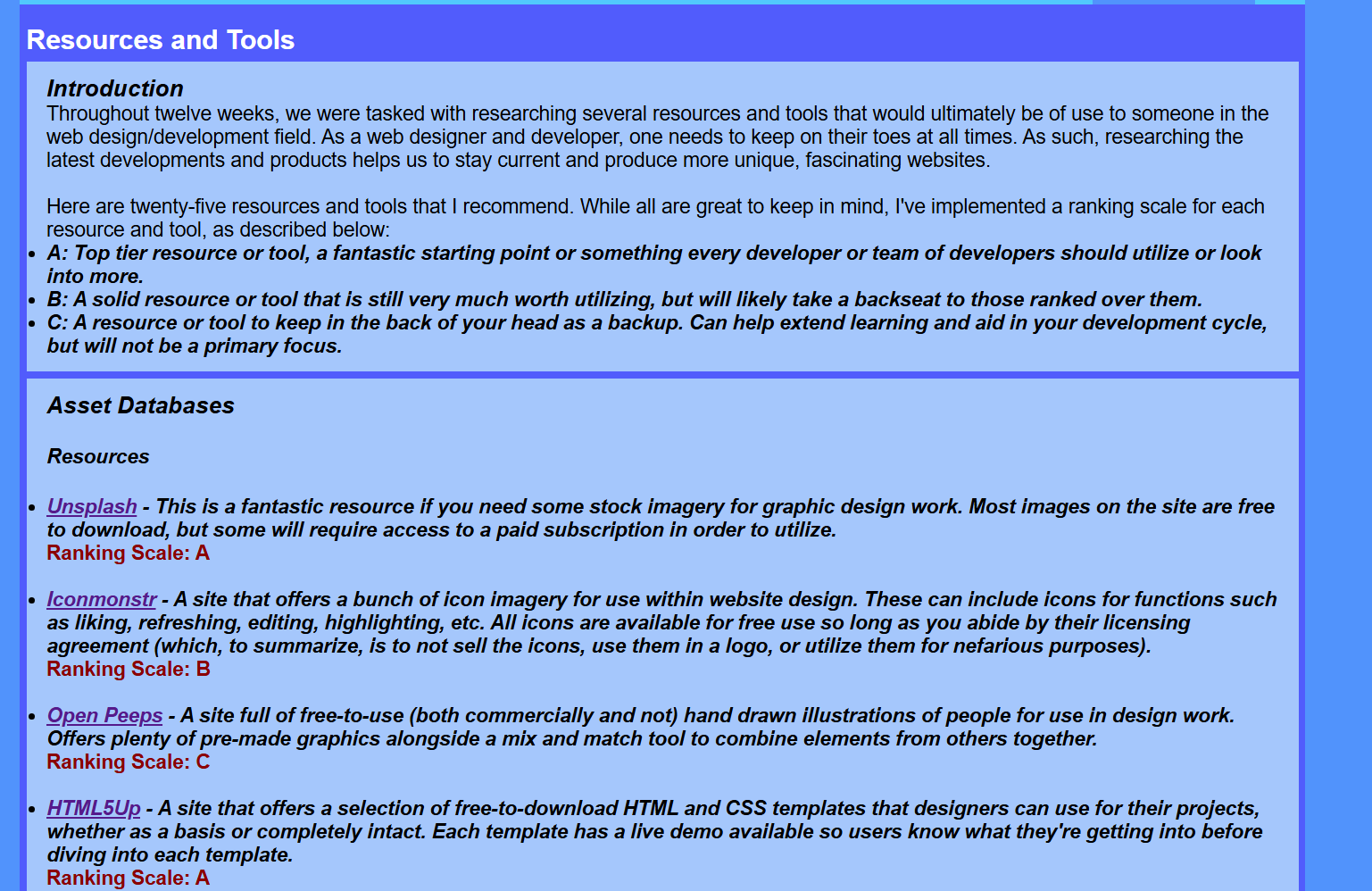Introduction
Throughout twelve weeks, we were tasked with researching several resources and tools that would ultimately be of use to someone in the web design/development field. As a web designer and developer, one needs to keep on their toes at all times. As such, researching the latest developments and products helps us to stay current and produce more unique, fascinating websites.

Here are twenty-five resources and tools that I recommend. While all are great to keep in mind, I've implemented a ranking scale for each resource and tool, as described below:
- A: Top tier resource or tool, a fantastic starting point or something every developer or team of developers should utilize or look into more.
- B: A solid resource or tool that is still very much worth utilizing, but will likely take a backseat to those ranked over them.
- C: A resource or tool to keep in the back of your head as a backup. Can help extend learning and aid in your development cycle, but will not be a primary focus.